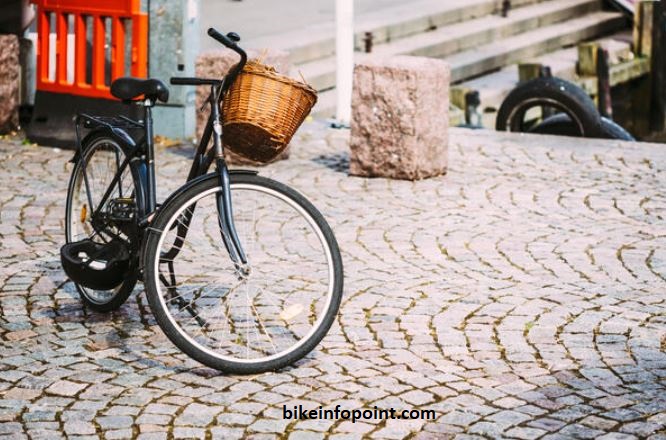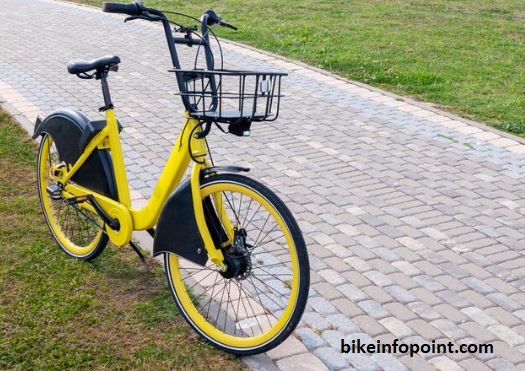
Can you put a basket on any bike?
Welcome to our quick guide on a common cycling question – Can you put a basket on any bike? Whether you’re a seasoned cyclist or just starting out, we’ll explore the versatility of bicycle baskets and help you discover the possibilities for adding a convenient and stylish storage solution to your two-wheeled companion. Let’s find out if your bike can be the perfect carrier for your needs!”
Table of Contents
ToggleTypes of Bike Baskets
A. Front-Mounted Baskets:
Front-mounted baskets are attached to the front handlebars of a bicycle.
Advantages:
Accessibility: They are easily accessible while riding, allowing you to quickly reach items like your phone, water bottle, or a map.
Improved balance: Front-mounted baskets distribute weight towards the front of the bike, which can help with balance and stability, especially when carrying light to medium-weight items.
Visibility: You can keep an eye on your belongings while riding, reducing the risk of theft or losing items.
Limitations:
Limited capacity: These baskets are typically smaller in size, so they may not be suitable for carrying larger or heavier items.
Handling impact: Overloading a front-mounted basket can affect the handling of your bike, making it less maneuverable.
B. Rear-Mounted Baskets:
Rear-mounted baskets attach to the rear rack or seatpost of a bicycle.
Advantages:
Increased capacity: They are generally larger than front-mounted baskets and can carry bulkier and heavier items, making them suitable for grocery shopping or transporting bags.
Improved bike stability: Placing weight toward the rear of the bike can enhance its stability, especially when carrying heavier loads.
Versatility: They can be used for a wide range of items, from groceries to backpacks, making them versatile for various purposes.
Limitations:
Limited visibility: Unlike front-mounted baskets, you cannot easily see the contents of rear-mounted baskets while riding, which may require you to stop and check your items.
Access challenges: Rear-mounted baskets might be less convenient for accessing items while on the move.
C. Pannier Baskets:
Pannier baskets are designed to attach to the sides of the rear rack on a bicycle and are often used for touring or long-distance cycling.
Advantages:
Exceptional capacity: Panniers typically provide the most storage space among the three types, making them ideal for extended bike trips and carrying camping gear or clothing.
Balanced weight distribution: They evenly distribute weight on both sides of the bike, enhancing stability.
Weather protection: Many panniers come with weatherproofing features to protect your items from rain and other elements during long rides.
Limitations:
Specialized use: Panniers are most suitable for touring or long-distance cycling and may not be practical for everyday commuting or short trips.
Cost: High-quality pannier baskets can be more expensive than front or rear-mounted baskets.
Understanding these different types of bike baskets helps cyclists choose the one that best suits their needs, whether it’s for daily commuting, grocery shopping, or extended bike touring. Each type has its unique advantages and limitations, making it essential to consider your specific requirements when selecting the right basket for your bike.

Tools and Accessories
A. Necessary Tools for Installation:
When installing a bike basket, you’ll typically require a set of basic tools to ensure a secure and proper attachment.
Common necessary tools include:
Wrenches: Depending on the type of bolts or nuts used for mounting, you may need a set of wrenches or socket wrenches.
Screwdrivers: To tighten screws or adjust mounting brackets.
Allen keys (hex keys): Often used for securing basket mounting brackets or rack attachments.
Pliers: Useful for bending and adjusting metal brackets or attaching cables.
Tape measure or ruler: For measuring and ensuring proper alignment during installation.
B. Additional Accessories for Customization:
Beyond the basic tools, you may want to consider additional accessories to customize your basket and improve its functionality.
Some customization options and accessories include:
Basket liners: These protect the contents of your basket and add a touch of style. They’re available in various colors and patterns.
Cargo nets: Elastic nets can help secure loose or oddly shaped items in your basket.
Handlebar extensions: For front-mounted baskets, handlebar extensions can provide extra space for accessories like lights or a GPS device.
Bungee cords or straps: These are handy for securing larger or irregularly shaped items in your basket.
C. How to Choose the Right Tools and Accessories:
Selecting the right tools and accessories is essential for a successful bike basket installation and customization.
Consider the following tips when choosing tools and accessories:
Compatibility: Ensure that the tools and accessories you choose are compatible with your specific bike and the type of basket you have.
Quality: Invest in quality tools to ensure durability and a secure installation. Avoid using substandard tools that might lead to issues down the road.
Basket type: Different baskets may require specific tools or accessories. For instance, pannier baskets might need additional mounting hardware, while front-mounted baskets might need handlebar extensions.
By carefully selecting the necessary tools and accessories, you can ensure a smooth installation process and customize your bike basket to suit your needs and style. The right tools and accessories not only enhance the functionality of your basket but also contribute to a more enjoyable and personalized biking experience.
Installation Process
A. Step-by-Step Guide for Installing a Basket:
Installing a bike basket typically involves several key steps:
Gather your tools and materials: Ensure you have all the necessary tools and accessories ready before you start.
Choose the appropriate mounting location: Depending on the type of basket and your bike, select the correct mounting location (front handlebars, rear rack, or seatpost).
Prepare the mounting brackets: If the basket requires them, assemble and adjust the mounting brackets according to your bike’s specifications.
Attach the brackets: Securely attach the brackets to your bike’s frame or rack using the appropriate tools.
Attach the basket: Carefully align and secure the basket onto the mounting brackets. Ensure it is level and stable.
Tighten all bolts and fasteners: Use the correct tools to firmly tighten all bolts and fasteners, ensuring a secure attachment.
Test for stability: Gently test the basket’s stability and make any necessary adjustments.
B. Safety Precautions:
Safety is paramount when installing a bike basket, as an insecure attachment can lead to accidents or damage.
Always follow the manufacturer’s instructions for installation. If instructions are not provided, consult with a professional or experienced cyclist for guidance.
Double-check the tightness of all bolts and fasteners to prevent the basket from coming loose during a ride.
Be mindful of weight limits. Overloading your basket can affect your bike’s balance and handling.
Regularly inspect the basket and its mounting to ensure it remains secure and undamaged.
The Benefits of Adding a Basket to Your Bike
Summarize the advantages of adding a basket to a bike:
Increased versatility: Baskets make your bike more versatile, allowing you to transport items for daily errands, groceries, work, or leisure activities.
Eco-friendly transportation: By using a bike for shopping or commuting with a basket, you reduce your carbon footprint and promote environmentally friendly transportation.
Personalization and style: Bike baskets can be a fashionable and functional addition to your bicycle, enhancing its aesthetics.
Encouragement for Personalizing Your Bike for Specific Needs and Preferences:
The conclusion should encourage readers to personalize their bikes to better suit their individual needs and preferences.
Biking is not a one-size-fits-all activity, and personalization can significantly enhance the enjoyment and utility of your cycling experience.
Whether it’s adding a basket for practicality, upgrading components for performance, or selecting accessories for style, customizing your bike can make it uniquely yours.


